When stop-motion effects artist Ray Harryhausen is attached to a film where the basic premise is “Cowboys vs Dinosaurs” one has to ask “What more could you possibly want?” The result of such a concept was the 1969 movie The Valley of Gwangi, a film based on a concept that Harryhausen’s mentor Willis O'Brien, the man behind the effects in the original King Kong, had conceived some time ago about a battle between a group of ranchers and a prehistoric beast, sadly, he passed away before this idea could come to fruition but years later Ray Harryhausen would re-team with long time collaborated and producer Charles H. Schneer to bring this idea to life.
Ray Harryhausen’s The Valley of Gwangi takes place in Turn of the 20th Century Mexico where a failing Wild West show, owned and operated by a cowgirl named T.J. Breckenridge (Gila Golan), gets the chance to make it big when they acquire a prehistoric Eohippus, an extinct genus of the horse family. This tiny creature came from the Forbidden Valley of Gwangi and an old blind gypsy named Tia Zorina (Freda Jackson) claims that the horse is cursed and if not returned to the valley death and misfortune will surely follow. Unfortunately for us, the first bit of misfortune is the arrival of Tuck Kirby (James Franciscus), a heroic former stuntman and former lover of T.J. Breckenridge, and he’s come to acquire her famed diving horse Omar for Buffalo Bill's Wild West Show but the possible fortune that could come from the Eohippus puts that idea on hold, not to mention the chance of rekindling a little romance with T.J.
“Honey, why don’t we adopt it?”
Any plans to do with tiny horses or romance are put on the backburner when British paleontologist named Horace Bromley (Laurence Naismith) mucks things up by trying to trick the gypsies into leading him to the Valley of Gwangi, where he’d hope to make more scientific discoveries, but tiny horses are far from the only residents of said valley, and before you can say “Lost World” they are fending off a variety of dinosaurs such as a winged Pteranodon, a persistent Styracosaurus and a very hungry Allosaurus. Needless to say, this is the highlight of the movie and it wonderfully showcases Ray Harryhausen’s talent as not only a master of special effects but a brilliant creator of living breathing creatures, who act and behave as one would expect such beast to do, unfortunately, we had to wait about an hour of this 90-minute movie to get to the good stuff – the animated Eohippus is cool but it’s no Allosaurus – and that this first hour contains a fairly unlikeable group of characters that wait is especially painful. It should also be noted that with The Valley of Gwangi it’s clear that Harryhausen was not afraid to borrow from himself because the scene of the cowboys trying to rope the Allosaurus is very reminiscent of the cowboys trying to rope the giant gorilla in Mighty Joe Young.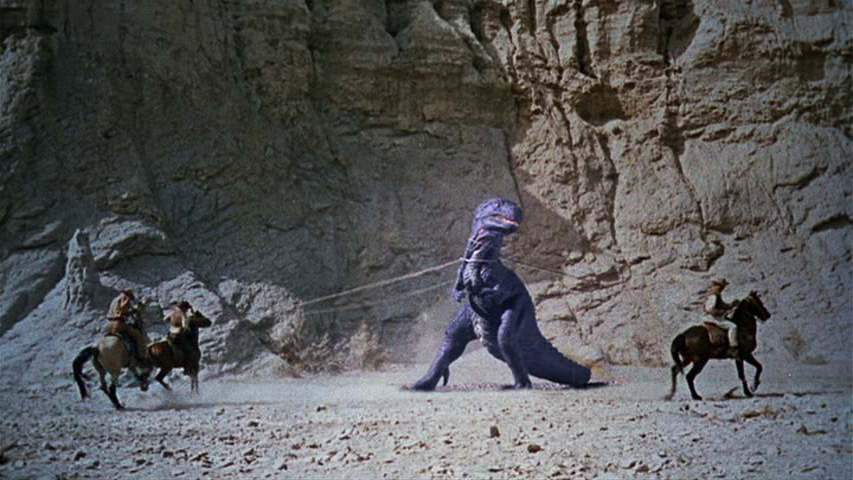
Note: The dinosaur roping sequence alone took more than two and a half months to complete and is a brilliant combination of live-action and stop-motion work.
Stray Observations:
• Like many of the Toho kaiju movies The Valley of Gwangi has a Kenny in its cast, this time in the form of an annoying little Mexican boy named Lope.
• I can let slide the idea of a Pteranodon carrying off Raquel Welch in One Million Years B.C. but one of these creatures being able to pick up a mule, as seen in this film, strains one's credulity.
• While trapped in the Forbidden Valley our cast of characters take refuge in a cave but it’s a cave with an entrance big enough for an entire chorus line of Allosaurus to march through.
• That crappy little desert valley would not have enough vegetation to support one Styracosaurus let alone the amount of food that would be required to keep the species alive, which also means there wouldn’t be enough meat to keep the Allosaurus and its brethren alive.
• I loved that the Allosaurus seemed impervious to gunfire until later when we learn that one of the idiot cowboys brought guns loaded up with blanks from the Wild West show's act.
• The Allosaurus fighting an elephant is another element lifted from a previous Ray Harryhausen feature, the Ymir in 20 Million Miles to Earth also has a climactic fight with an elephant.
Did Ray Harryhausen have something against elephants?
The human characters in monster movies are often less interesting than the title creatures and The Valley of Gwangi is a perfect example of this because the supposed “hero” of the picture is played by James Franciscus, who I’ve always considered the poor man’s Charlton Heston, and his Tuck Kirby character has an emotional range that goes from smug and shallow all the way to self-righteous and pompous. It’s a failure of screenwriting if we are actually cheering for the hero to be eaten by the monster but that was certainly the case for me when I first sat down to watch this film. Of course, one doesn’t sit down to watch a Ray Harryhausen film in the hopes of being enlightened on the Human Condition, we want cool monsters and great stop-motion sequences, and in that category, The Valley of Gwangi is a solid enough entry, it’s just a shame that when someone asked “What could you want more than cowboys vs dinosaurs?” apparently, no one could come up with anything and thus we have nothing but a thin plot and unlikable character to flesh out the running time.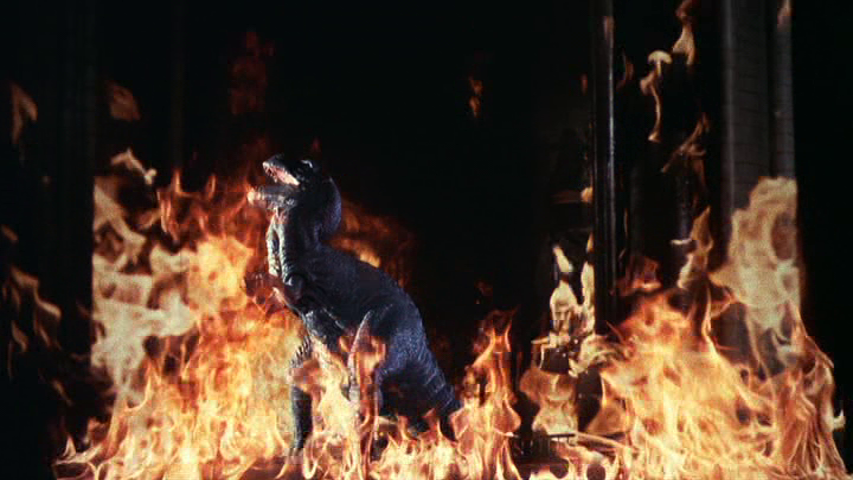
Note: Ray Harryhausen once again draws from previous films as the Allosaurus dying amongst a fiery conflagration is similar to what happened at the end of The Beast from 20,000 Fathoms.
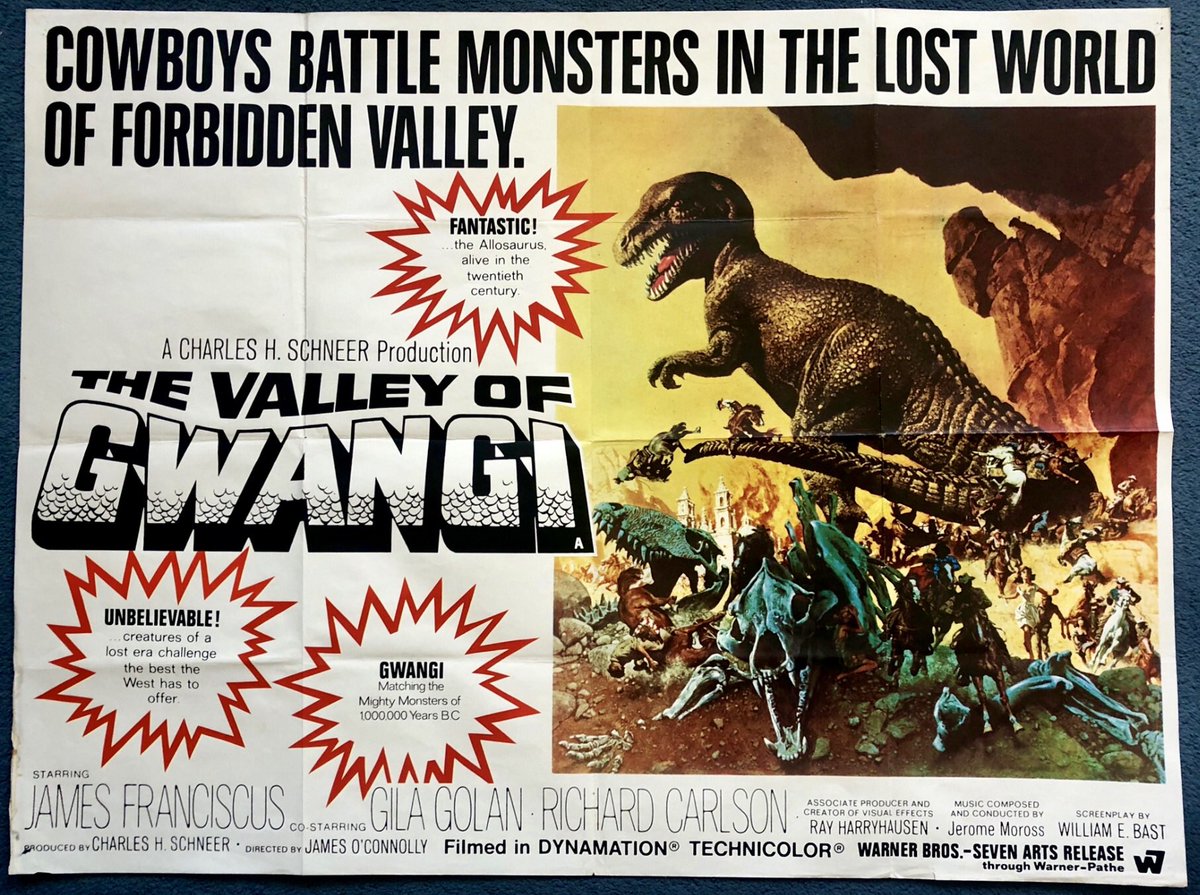
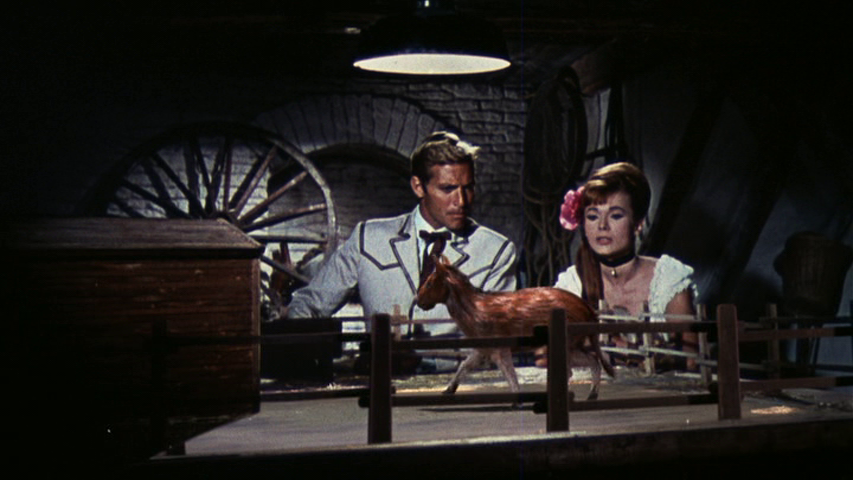
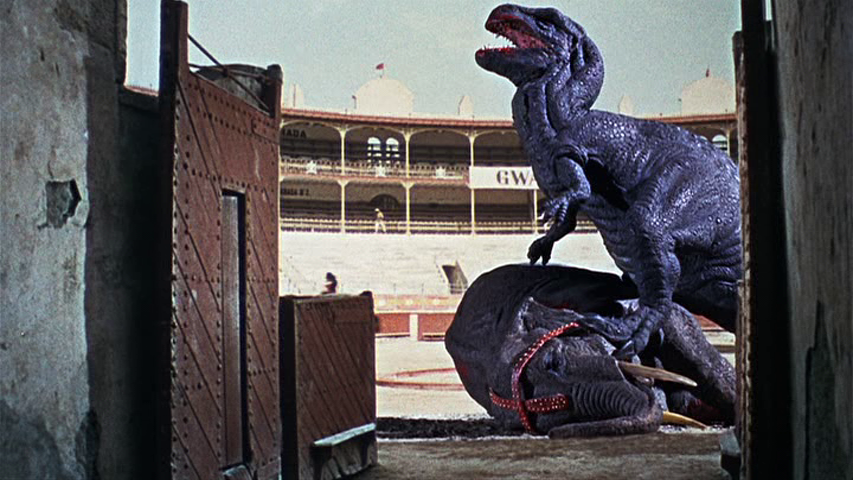
No comments:
Post a Comment